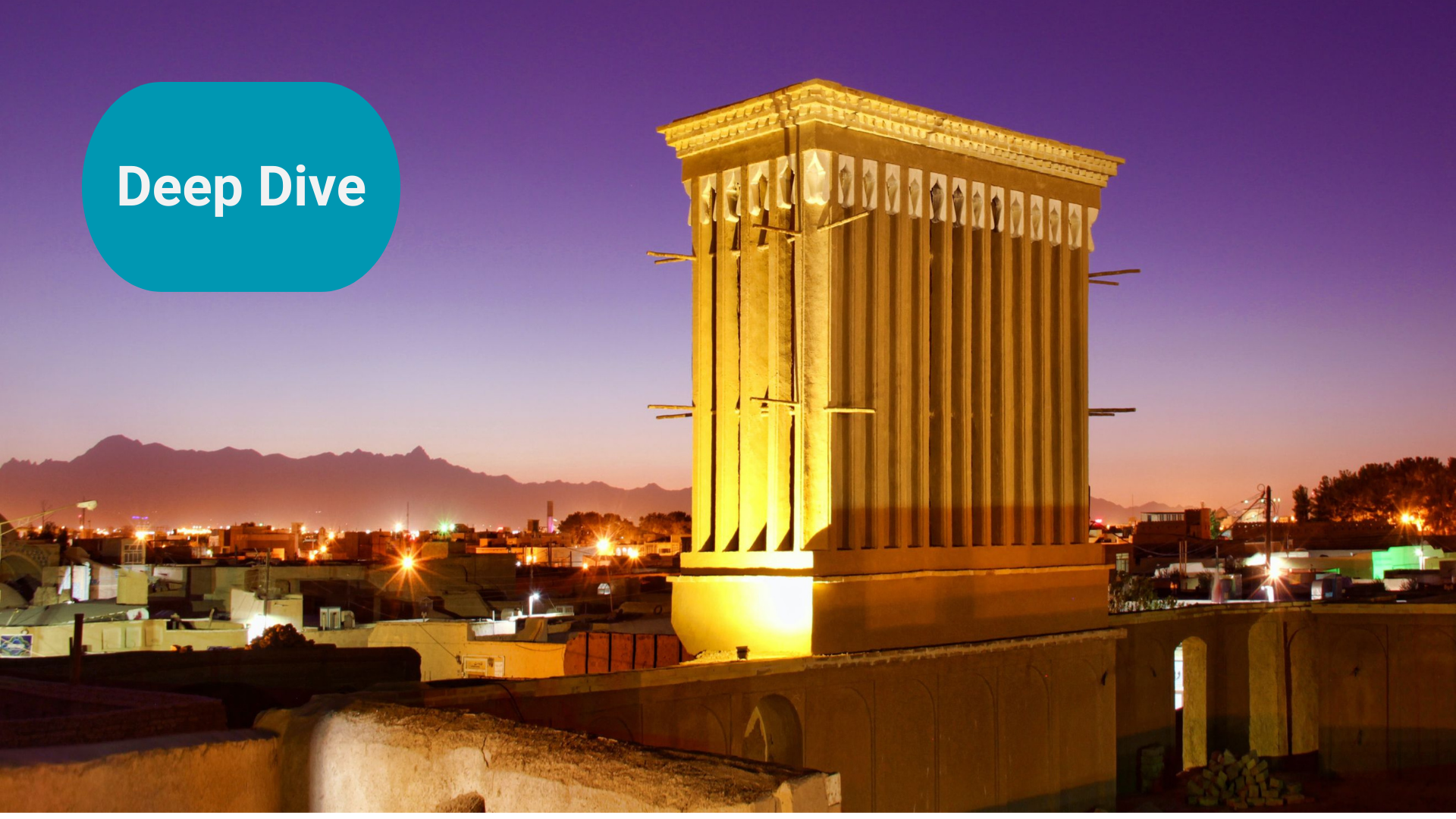
The answer, my friend, is suckin' in the wind
The windcatcher, used for thousands of years, is another example of a simple and ancient innovation that can be a solution today.
Summary: An important ancient innovation for regulating the temperature in homes that was widely used in northern Africa through Asia, the windcatcher takes advantage of two fluid dynamics principles, passively cools buildings as well as providing cross ventilation.
Why this is important: Another example of a simple and ancient innovation that has applicability in today's built environment.
The big theme: The built environment, encompassing residential and commercial buildings, communal areas such as parks, and supporting infrastructure such as energy networks, mobility, and water supply, is an important sustainability theme that shouldn't be taken for granted. It is an integral part of societal existence and a major decarbonisation (40% of energy-related GHG emissions) and resource consumption problem (40% of global raw materials) that needs investor attention. It can have significant impacts on our health, well-being and equity and inclusion, notably as climate change and climate-induced migration is steadily and significantly increasing the number of people exposed to extreme weather, including heat stress.

The details
The built environment is a key decarbonisation and health and well-being problem. Whilst new technologies will be key - and I shall discuss some particularly innovative ones in a later blog - ancient approaches can inspire modern investible equivalents. In 'The simple and the ancient' I discussed a number of such approaches and the modern day equivalents that they have inspired. It was a fascinating area to research and I simply could not fit everything in.
In this blog I discuss an important ancient innovation for regulating the temperature in homes that was widely used in northern Africa through Asia. Taking advantage of two fluid dynamics principles, the windcatcher passively cools buildings as well as providing cross ventilation.
Still in use today in both traditional and in non-traditional locations (the latter of which being shopping malls, for example), they are also the ancestors of such innovative technologies as the Aeromine, all of which could potentially help to smooth out renewable energy production and decarbonise commercial and potentially residential properties. More on this later in the blog.
Pause for a quick fluid dynamics lesson
The clue is in the name. Windcatchers well.. they catch wind. To be more precise they draw in air, which is a type of fluid. While studying engineering at university, a major area of learning was fluid dynamics or how liquids and gases flow, and what can impact that flow. There are a couple of fluid dynamics topics that will be relevant for us to understand how windcatchers and how modern day inspirations such as Aeromine work.
We shall look at Bernoulli's Principle and the Stack Effect.
The mysterious case of the law student with wet hair
I remember a fellow student who was studying law, bursting into my room one evening excitedly proclaiming that he had experienced Bernoulli's Principle. I looked up from my desk and noticed that whilst fully clothed his hair was still wet. He went on to explain that as he had been standing in the shower and felt the shower curtain moving towards him and sticking to the side of his leg.
In his 1738 book Hydrodynamica, Daniel Bernoulli applied the principle of conservation of energy to fluid dynamics. He explained the relationship between hydrodynamic pressure and kinetic energy which historically and delightfully was referred to as 'vis viva' or 'living force'. His close friend Leonhard Euler would subsequently derive 'Bernoulli's equation' in 1752.
In summary, the law of conservation of energy states that the total energy of an isolated system remains constant. Energy isn't destroyed or created. It is just changed from one type to another. So the sum of the kinetic energy (the energy the fluid has because it is moving), the pressure energy (energy of the fluid because there is a force applied to it) and the potential energy (the energy the fluid has because of its position) should remain constant (there are some nuances to that but for our purposes let's assume that is always true).
So for the shower curtain, the fast moving water flowing down past the curtain causes the air on the inside of the curtain to increase in speed leading to a decrease in pressure. That means that the pressure on the inside of the curtain is lower than the pressure on the outside of the curtain - a pressure differential - causing the curtain to move inwards, and if you are not paying attention stick to your leg.
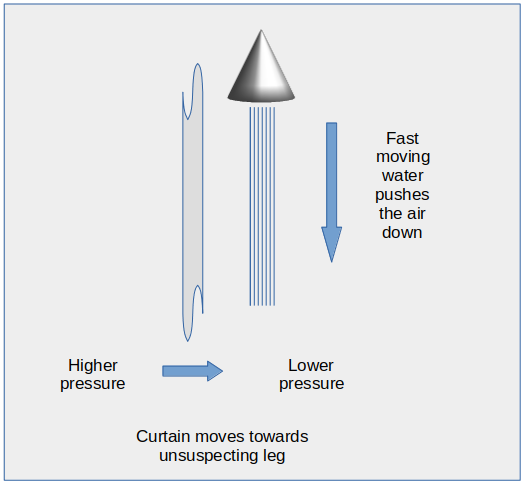
If we flip the image 90 degrees then you have essentially what happens with an aerofoil or air plane wing with the 'curtain movement' being the lift that enables a plane to remain airborne.
My fellow student then went on to postulate that the curvature of our building was really a giant plane wing and so was generating lift that was making the shower curtain move even more. True, the Fisher Building at Queens' was a curved shape, but I think that last bit was a bit of a stretch!
Fun fact: at my Cambridge interview, Professor Richard Prager, who is now Head of Cambridge University Engineering Department, teased the derivation of Bernoulli's Principle from me using a balloon.
Fun fact #2: the law student was also called Daniel.
That sucks!
Another impact on fluid flow is temperature and in particular temperature gradients. The 'stack effect'. Thinking back to conservation of energy, if air (a fluid) has higher temperature, its molecules are moving faster or its kinetic energy is higher which means its pressure must be lower. This means that it becomes more buoyant and rises.
In a building, this “stack effect” happens when that rising warm air reduces the pressure at the base of the building drawing more cold air in through, open doors and gaps. It wouldn't work in a completely sealed building so sadly no stack effect for you Moon Base!
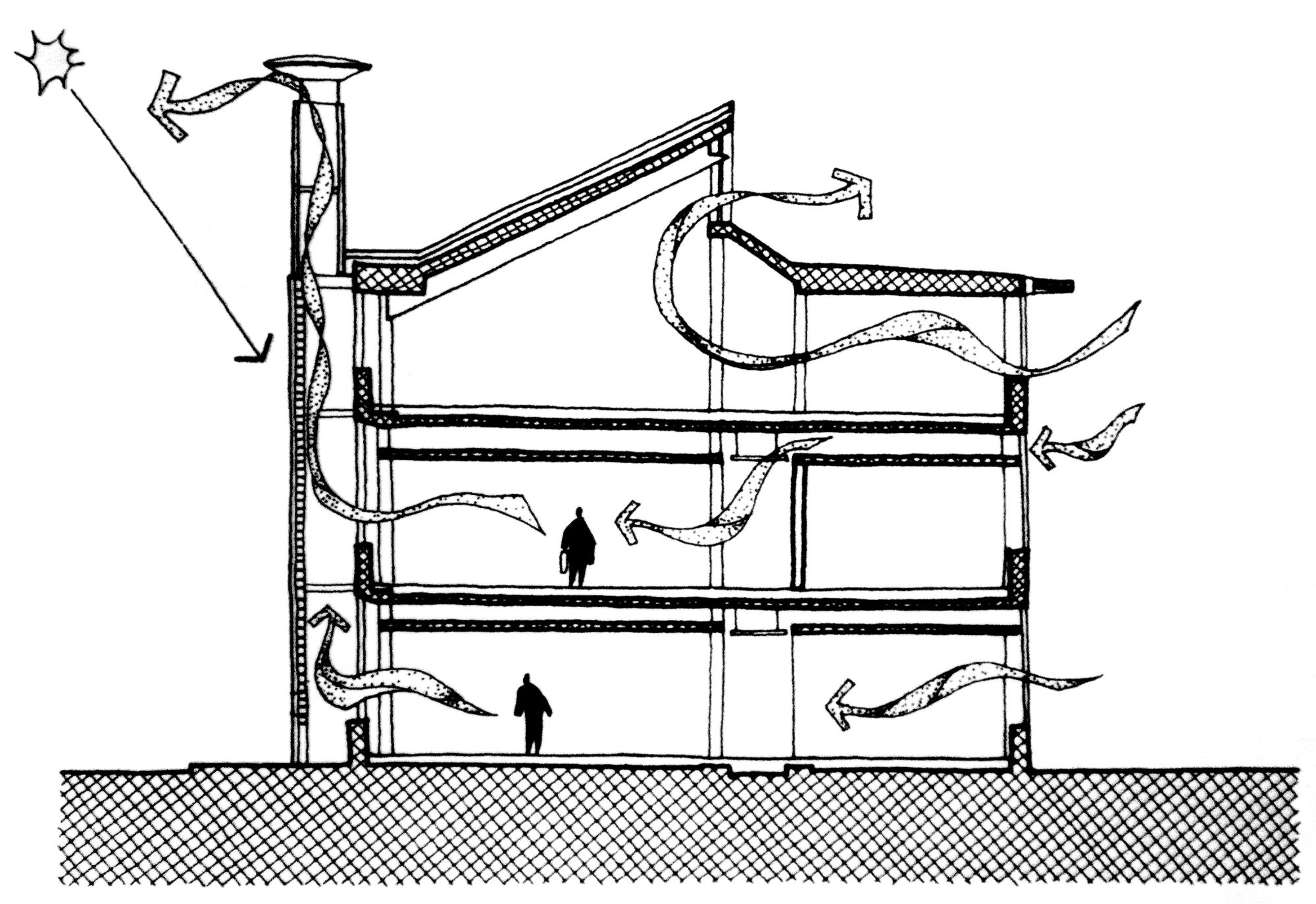
The windcatcher
Windcatchers or cooling towers were used extensively in North Africa, Asia and the Persian Gulf for thousands of years. They resemble chimneys and can be made from wood, clay or bricks. They work in two ways. They can use the pressure of wind blowing into the windcatcher to direct airflow into the interior of the building (Bernoulli's Principle) or by exploiting temperature gradients at times when there is less wind (the stack effect).
Windcatchers had a number of adaptations in ancient times depending on the individual circumstance of the property being cooled and the ingenuity of the builders. For example they can be used in combination with an underground canal, called a qanat. When hot air is sucked down the tower into the qanat it is cooled by coming into contact with the cold water. The building is then cooled by this air that is drawn back up through the windcatcher.
There are areas in which there isn't enough wind or that are impractical locations for a qanat. In those circumstances the windcatcher acts as a solar chimney, drawing hot air up the tower to escape through at the top. Alternatively, the inside of the columns or base of the tower can be sprayed with water, which evaporates and cools the air. (Top tip: you can actually improve the effectiveness of a desk fan by putting a bowl of ice cubes in front of it).
There are modern examples of windcatchers in use in both commercial properties and even some residential ones, such as oast houses in the UK, like the one below.
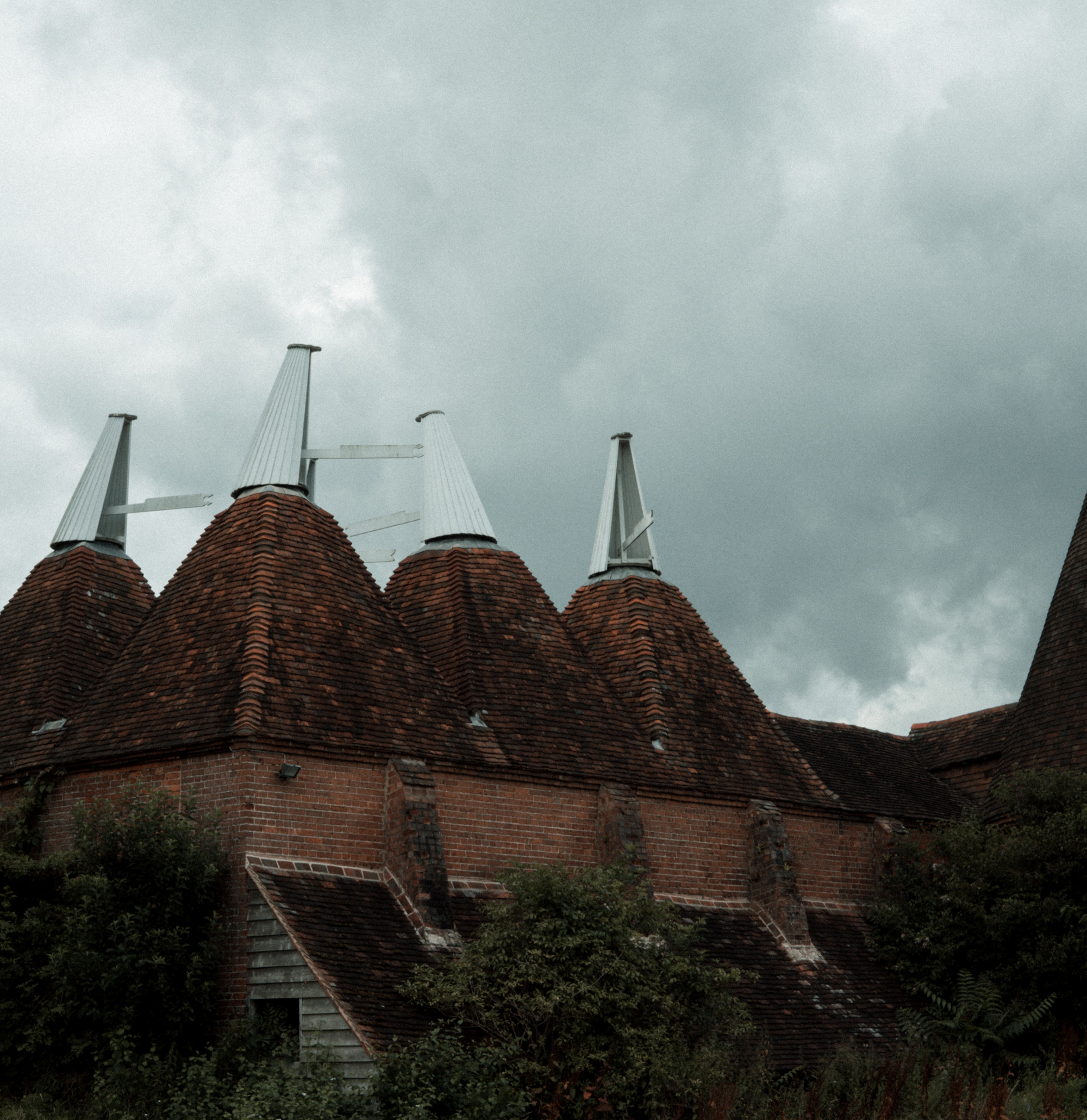
Their effectiveness is dependent on local weather and micro-climate conditions but as they are passive in nature, they can function when power fails and are generally cheaper to construct than traditional heating, ventilation, and air conditioning (HVAC) systems. The Bluewater shopping centre in Kent has them working in conjunction with a mechanical ventilation system.
Turbine-free wind turbines for rooftops
A typical wind turbine is massive. They can be roughly as tall as the Statue of Liberty, with blades that stretch wider than a football field. Some are even bigger. For example the new offshore turbines from Siemens have a 774-foot-wide rotor - that is longer than the pitches at Wembley stadium and Twickenham stadium laid end to end.
The US Department of Energy estimates that an average commercial building consumes approximately 22.5 kWh per square foot per year. Regular readers will know that we are big fans of the potential for local distributed energy and microgrids. A gap in the armoury of this type of solution is wind turbines, which can help to balance out periods when there is no solar generation. Some locations can have standalone wind turbines, but rooftop wind is challenging—spinning blades are noisy, distracting, and (like their larger counterparts) can kill birds.
Aeromine Technologies has developed a new wind power generating solution. By contrast, their new 10-by-10 foot turbine unit is relatively tiny. And without moving blades, it isn’t immediately recognizable as wind energy tech. The devices are meant to sit on the edge of a rooftop instead of out in a field, and can work alongside solar panels.
When it’s perched on a roof, the tech uses the aerodynamic effect of the wall below it. The building amplifies the wind speed, and the wind is drawn in between two airfoils, similar to the shape of airplane wings. As the wind hits those airfoils, it creates a negative pressure that sucks the wind through an internal propeller on the bottom of the unit, which creates the energy production.
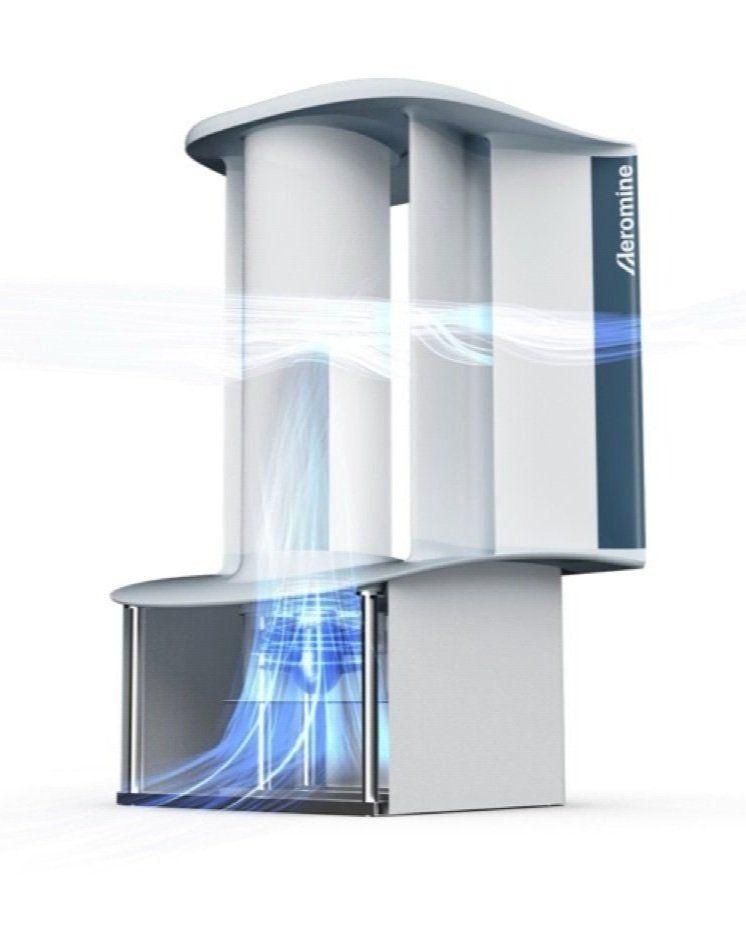
If rooftop wind and solar together can work, in industrial complex’s and on apartment buildings, the need for expensive battery storage can be reduced. This can provide an alternative energy source for EV charging, and for building heating and cooling, reducing the reliance on utility scale infrastructure. It's early days for this particular solution, but it’s a theme worth watching.
Vertical gardens as air conditioners
Finally, here is an example of an approach that provides two benefits. Studies in Akure, Lagos and Dar es Salaam demonstrated that vertical greening/gardening systems could be an effective solution for heat problems in informal neighbourhoods as well as providing a source of healthy food. A typical set up produced up to 1kg of vegetables harvested in a six-week cycle. Indoor wall temperature reduced by as much as five degrees Celsius in the Dar es Salaam trial.
Research from scientists at the Pontificia Universidad Catolica del Ecuador also found that vertical gardens could be used as an active evaporative cooling air conditioning unit. Their gardens which measured 1.5m wide x 2.8m high cooled the air that was drawn over them by more than 2 degrees Celsius.
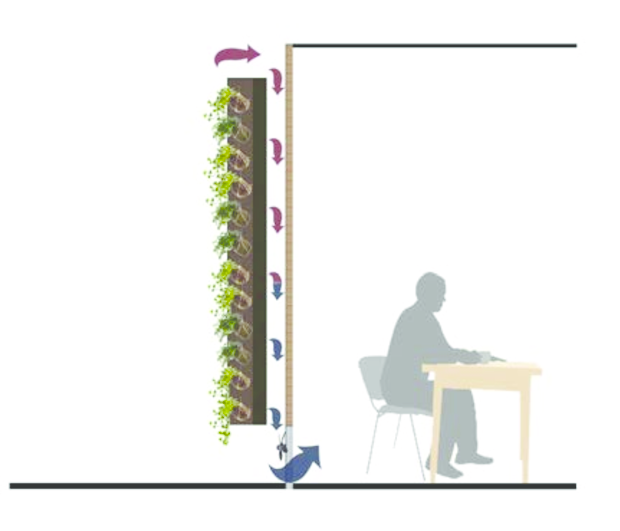
Conclusion
There are a number of ways in which the air and wind can be used to passively cool homes and commercial buildings taking advantage of well known fluid dynamics principles as well as wisdom of the ancients. Innovation can supercharge those and help in the goal of reducing both the harmful emissions and the costs associated from keeping buildings at an appropriate temperature.
Something a little more bespoke?
Get in touch if there is a particular topic you would like us to write on. Just for you.
Contact us
Please read: important legal stuff.

